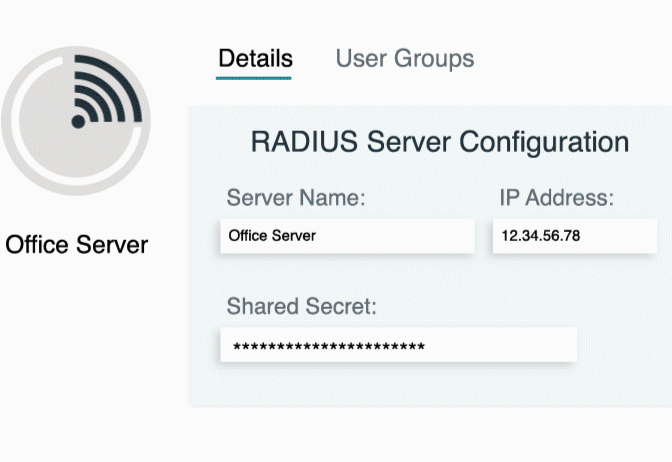Updated on September 12, 2025
Ternary Content Addressable Memory (TCAM) represents one of the most specialized and critical components in high-performance networking hardware. This ultra-fast memory technology enables network devices to perform wire-speed packet forwarding and complex policy enforcement that would be impossible with traditional memory architectures.
TCAM stands apart from conventional memory systems through its unique ability to search its entire contents within a single clock cycle using three distinct states: 0, 1, and “X” (don’t care or wildcard). This ternary capability makes TCAM the backbone of modern routing tables, access control lists, and quality of service implementations in enterprise-grade network equipment.
For network engineers managing high-throughput environments, understanding TCAM’s architecture and limitations directly impacts network performance, capacity planning, and feature implementation decisions. The technology’s specialized nature brings both unprecedented speed advantages and significant cost and power trade-offs that influence how network devices are designed and deployed.
Definition and Core Concepts
TCAM is a specialized, high-speed memory capable of searching its entire contents within a single clock cycle. The term “ternary” highlights the memory’s capacity to store and query data using three different states: 0, 1, and “X” (don’t care or wildcard). This “don’t care” state significantly enhances the flexibility of search operations, making TCAM ideal for rules-based lookups like Longest Prefix Match (LPM), Access Control Lists (ACLs), and Quality of Service (QoS) policies.
Content Addressable Memory (CAM)
Content Addressable Memory (CAM) functions as the foundation for understanding TCAM. CAM operates as a type of memory where data is provided (the “content” or key), and the memory returns the address(es) where that data is stored. This contrasts with Random Access Memory (RAM) where an address is provided to retrieve data. CAM only supports binary (0 or 1) exact matches, limiting its flexibility for pattern matching applications.
Ternary State (0, 1, X)
The unique “X” or “don’t care” state distinguishes TCAM from binary CAM. An ‘X’ bit in a TCAM entry matches both ‘0’ and ‘1’ in the search key. This capability enables flexible pattern matching essential for network routing and policy enforcement.
Parallel Search
TCAM’s ability to search its entire content simultaneously in a single clock cycle represents its most significant architectural advantage. Every memory cell performs comparison operations concurrently, eliminating the sequential search delays inherent in traditional memory systems.
Longest Prefix Match (LPM)
TCAM inherently supports LPM due to its ability to store and search with “don’t care” bits. This capability makes it essential for IP routing table lookups where network prefixes of varying lengths must be matched efficiently.
How It Works
TCAM operates through several sophisticated mechanisms that enable its high-speed search capabilities.
Data Storage (Value, Mask, Result – VMR Format)
Entries in TCAM are stored as a combination of three components: a Value (the binary pattern), a Mask (indicating which bits are ‘0’, ‘1’, or ‘X’), and a Result (the action or address associated with the match). The Mask bit is often stored separately from the value bits, effectively creating the ternary state.
For example, a stored rule like 10XX0 matches 10000, 10010, 10100, and 10110. This flexibility allows a single TCAM entry to represent multiple possible matches.
Parallel Search Operation
When a search key (such as a packet’s destination IP address) is presented to the TCAM, every single memory cell in the entire TCAM performs a comparison with the input simultaneously. The “don’t care” bits (X) in stored entries automatically match any incoming bit, enabling flexible pattern matching.
Match Line Activation
For each entry, if all bits match (considering ‘X’ states), a dedicated “match line” for that entry is activated. This parallel activation system allows multiple entries to signal matches simultaneously.
Priority Encoder
Since multiple entries can potentially match a given search key (especially with “don’t care” bits and LPM), a priority encoder circuit selects the “best” match. For LPM, entries are typically sorted in the TCAM by prefix length, with longer prefixes having higher priority. The priority encoder returns the highest priority (longest prefix) match from all simultaneous matches.
Result Output
The address or result associated with the winning entry is returned to the router’s forwarding engine. This entire process completes within a single clock cycle regardless of the number of stored entries.
Comparison to RAM/CAM
The fundamental differences between these memory types highlight TCAM’s specialized role:
- RAM: Sequential search, address-to-data lookup
- CAM: Parallel search, data-to-address lookup, exact match (0/1) only
- TCAM: Parallel search, data-to-address lookup, supports ternary (0/1/X), optimized for longest prefix and pattern matching
Key Features and Components
TCAM’s specialized architecture delivers several critical capabilities for high-performance networking applications.
Ultra-High-Speed Search (O(1))
TCAM can perform a search across its entire content in a single clock cycle, regardless of the number of entries. This represents its most significant advantage over alternative memory architectures and enables wire-speed packet forwarding in high-capacity network devices.
Ternary Matching (0, 1, X)
Support for wildcard bits enables flexible pattern matching essential for variable-length network prefixes and complex rule sets. This capability allows network administrators to implement sophisticated policies without performance degradation.
Parallel Lookup
All entries are compared simultaneously during each search operation. This parallel processing eliminates the scaling penalties associated with sequential search algorithms.
Longest Prefix Match (LPM) Acceleration
TCAM is specifically optimized for LPM operations in IP routing. The combination of ternary matching and priority encoding makes it ideal for routing table lookups where the most specific matching prefix must be identified quickly.
Packet Classification
TCAM excels at matching complex rules based on multiple packet header fields simultaneously. This capability supports advanced features like access control lists and quality of service policies.
Hardware Implementation
TCAM is typically implemented in Application-Specific Integrated Circuits (ASICs) within network devices. This dedicated hardware implementation ensures consistent performance and reliability under high-traffic conditions.
Programmable
Entries can be dynamically added, removed, and prioritized without requiring device reboots. This programmability enables real-time policy updates and network configuration changes.
Use Cases and Applications
TCAM serves critical functions across multiple networking domains where high-speed lookups are essential.
IP Routing Tables (FIB – Forwarding Information Base)
TCAM accelerates Longest Prefix Match lookups for rapid packet forwarding in high-capacity routers and Layer 3 switches. The Forwarding Information Base stored in TCAM enables wire-speed routing decisions essential for backbone network performance.
Access Control Lists (ACLs)
TCAM stores and rapidly evaluates complex firewall rules, including allow/deny decisions based on source IP, destination IP, port, protocol, and flags. Multiple ACL entries can be evaluated in parallel, enabling sophisticated security policies without performance impact.
Quality of Service (QoS) Classification
Network devices use TCAM to categorize and prioritize packets based on specific criteria for traffic management. This capability ensures that critical applications receive appropriate network resources even during congestion.
VLAN Tagging/Filtering
TCAM stores and matches VLAN IDs for rapid traffic segregation across network segments. This application supports large-scale network virtualization and segmentation strategies.
Network Intrusion Detection/Prevention Systems (IDS/IPS)
Security appliances leverage TCAM to store known malicious signatures and complex attack patterns for high-speed detection. This capability enables real-time threat identification without impacting network throughput.
Network Address Translation (NAT)
TCAM stores NAT rules for fast address translation decisions in high-throughput environments. This application is particularly important in service provider and enterprise edge deployments.
CPU Translation Lookaside Buffers (TLBs)
Some CPU architectures incorporate TCAM for fast virtual-to-physical address translation. This application demonstrates TCAM’s versatility beyond networking applications.
Advantages and Trade-offs
TCAM’s specialized architecture brings both significant advantages and notable limitations that influence its deployment in network infrastructure.
Advantages
- Unmatched Speed: TCAM performs lookups in a single clock cycle regardless of table size, making it crucial for wire-speed forwarding in high-capacity network devices.
- Flexibility for Rules: The “don’t care” state makes TCAM perfect for matching variable-length prefixes, wildcard patterns, and complex multi-field rules that would be challenging to implement efficiently with other memory types.
- Offloads CPU: TCAM reduces the workload on the router’s main CPU for forwarding decisions, freeing processing resources for control plane functions and advanced features.
- Enables Complex Policies: Network administrators can implement sophisticated routing, security, and QoS policies without performance degradation, supporting advanced network services.
- Parallel Processing: TCAM can evaluate multiple rules or multiple packet classification criteria simultaneously, maximizing throughput efficiency.
Trade-offs and Limitations
- High Cost: TCAM cells require significantly more transistors per bit (often 10-16 transistors per bit) than traditional RAM, making them much more expensive and less dense. This cost factor limits the amount of TCAM that can be economically included in network devices.
- High Power Consumption and Heat Generation: All TCAM cells are active during every search cycle, leading to much higher power consumption and heat output compared to RAM. This power requirement affects device design and operational costs.
- Limited Capacity: Due to cost and power constraints, TCAMs are typically much smaller in capacity (measured in megabytes) than the DRAM used for routing information bases or general packet buffers. This capacity limitation restricts the number of rules and routes that can be stored in hardware.
- Complexity in Management: Efficiently managing TCAM space requires specialized software and careful allocation of resources. Different features (routing, ACLs, QoS) compete for limited TCAM entries, requiring strategic resource planning.
- Sorting Requirement for LPM: For Longest Prefix Match operations, entries often need to be sorted by prefix length in the TCAM to ensure the priority encoder picks the correct match. This sorting requirement adds management overhead and complexity.
Key Terms Appendix
- TCAM (Ternary Content Addressable Memory): A specialized, high-speed memory capable of searching its entire contents in a single clock cycle using 0, 1, and “X” (don’t care) states.
- CAM (Content Addressable Memory): A memory type that searches by content (data) and returns addresses, supporting only exact binary matches.
- RAM (Random Access Memory): Traditional computer memory accessed by address rather than content.
- Longest Prefix Match (LPM): The routing algorithm that TCAM accelerates for IP forwarding decisions.
- Routing Table (FIB – Forwarding Information Base): The optimized table used for fast packet forwarding, often stored in TCAM.
- Access Control List (ACL): A set of rules for filtering network traffic based on various packet characteristics.
- Quality of Service (QoS): Mechanisms to prioritize and manage network traffic to ensure appropriate service levels.
- Packet Classification: The process of categorizing packets based on their header characteristics for policy enforcement.
- ASIC (Application-Specific Integrated Circuit): A microchip designed for a specific application, often used to implement TCAM functionality.
- Priority Encoder: A circuit that selects the highest priority input from a set of active inputs, essential for LPM operations.





